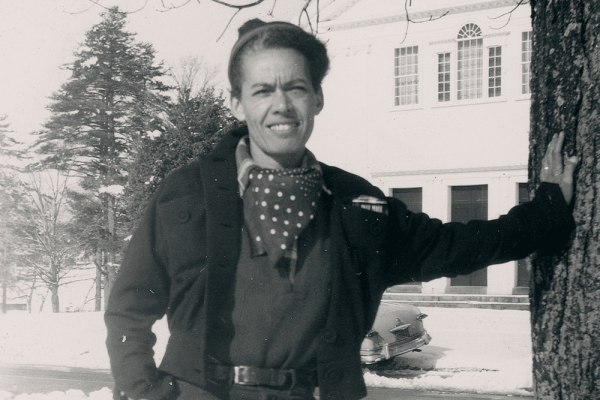A Christian revival is typically defined as a continuous gathering that leads to an act of mass repentance. Though you won’t find the word “revival” used in the Bible, its likeness is seen all throughout scripture. Jesus breathing the Holy Spirit on his disciples in the upper room and the early days of the church during Pentecost are two biblical examples of revival (John 20:22-23; Acts 2). Each of these stories emphasizes aspects of what is typically understood to be a revival: a gathering of people that leads to repentance.
But what role does justice play in revivals? This is a question I’ve asked myself for the past few years as I’ve been untangling how the white church tends to define revival. Until recently, I attended a predominantly white-led church where the prevailing belief was that God was less concerned about marginalized groups’ current sufferings and more focused on where our souls would spend eternity.
Despite the many revival services and conferences held every year across the country, it seems white Christians in the U.S. have yet to be radically transformed when it comes to justice advocacy. I’m not looking to label others’ revival experiences as “true” or “false.” Instead, I’m hoping that Christians in general — but white Christians specifically — learn to expand their understanding of what a revival entails. After the harm and reprimand I experienced in the white evangelical church for my dedication to social justice, I have returned to the Black church tradition in which I was raised. Being in this space has affirmed my belief that worshiping Christ and fighting for a more just world go hand in hand.
Ultimately, I think there are times when revival spreads to the streets for weeks on end but because it doesn’t happen within the four walls of a church where there is ambient lighting and bottomless coffee, we don’t recognize it.
Despite a multiracial coalition of Christians participating in movements for racial justice since 2020, the word “revival” has been largely absent from the white church’s lexicon when describing the ongoing lamenting and protesting in the streets that began in the wake of the killings of Ahmaud Arbery, Breonna Taylor, and George Floyd.
More specifically, the white evangelical church has a habit of excluding Christians dedicated to social justice. Rather than seeing their advocacy work as an integral part of their faith and a sign of revival, their work is understood to be at odds with their love for Christ and is met with calls for silence and false unity.
Following the killings of Arbery, Taylor, and Floyd, young Black Christians’ continuous demand for justice was mislabeled or completely overlooked by the same individuals who were quick to draw our attention to and encourage support of the Asbury revival, the spontaneous, student-led gathering in Wilmore, Ky. that lasted for 16 days
For example, Sean Feucht, a far-right Christian singer, politician, and former worship leader at Bethel Church hosted unmasked concerts just blocks away from Black Lives Matter protests in 2020. In a Facebook post, he referred to his concerts as revivals and “genuine racial reconciliation” while labeling Black Lives Matter protesters as violent. In February, Feucht tweeted that Christians shouldn’t be quick to dismiss the Asbury revival “just because it doesn’t fit what YOU THINK a revival should look like.” What I want to say to Feucht and other Christians who agree with him is this: Justice advocacy, whether you agree with the tactics or not, is a form of worship and revival.
In the United States, Black Christians have historically understood spiritual awakenings — or revivals — to be of one piece with social justice movements. The Azusa Street Revival, which started in 1906 and was led by Black pastor William J. Seymour, is one such example. But many may fail to remember that racial integration was a major motivator behind the gatherings.
Black faith leaders throughout American history have combined the message of justice and Jesus. For instance, Black faith leaders and civil rights advocates like Fred Shuttlesworth and Rev. Martin Luther King Jr. spread the good news of Christ while also laboring for racial justice. During the Civil Rights Movement, ministers like Shuttlesworth and King mobilized their church congregations to participate in direct action. But even before the Civil Rights Movement, Black Christians saw a connection between justice and revival. This connection is most evident in the story of Moses entreating Pharoah to release the Hebrews from slavery so that they can go and worship God (Exodus 5).
We must remember that God wanted to free the Hebrew people so that they could worship in freedom. Moses says to Pharoah at God’s command and on behalf of the Hebrews, “Let my people go, so that they may celebrate a festival to me in the wilderness” (Exodus 5:1). When I read Moses’ demand, I think of the 19th-century abolitionist who was nicknamed “Moses” because she led so many enslaved people to freedom, Harriett Tubman. Tubman understood her work to be divinely inspired, “I always told God, ‘I’m going to hold steady on you, and you’ve got to see me through.’” Tubman made 19 trips to the South to help people escape from slavery, and in all her trips, she claimed that she “never lost a passenger.” For Tubman, justice work and the work of God were a single piece.
Moses and Tubman’s dedication to freeing God’s people demonstrates that revival is best understood when justice and worship are combined. If we don’t advocate for freedom and liberation while also “steadying” ourselves on God, can we truly say we want a revival?
The transformative work of revivals shouldn’t be confined to the “secular” world of advocacy. Taking our examples from the biblical witness and the Black church, revivals should spread to the community, change how we care for our neighbors, and remind us that we can’t go back to business as usual.
Got something to say about what you're reading? We value your feedback!







